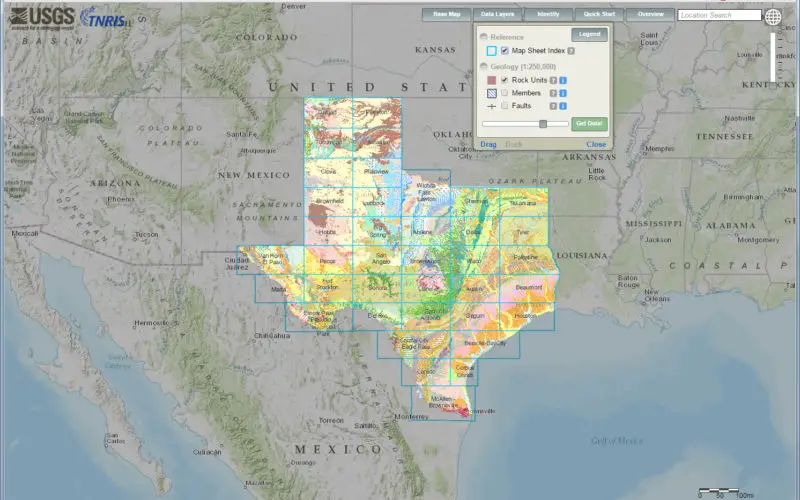Do you know where to find extinct volcanoes or where the dinosaurs once roamed in Texas? Can you find where unconventional oil and gas formations are present at the land surface? A new interactive map viewer displaying the geology of Texas will help you explore what’s under your feet and across the state!
The new map viewer is an interactive web-based tool that allows a broad range of users to explore the geology of the Lone Star State at a scale of 1:250,000. Users can navigate the map with a simple click-and-point tool, or by using the location search tool to find common geographic place names, latitude/longitude coordinates and other areas of interest. The interactive map viewer allows users to turn data layers on or off, identify layers of interest and retrieve detailed information about each geologic formation, such as the feature name, geologic age and feature description.

Graphic showing new interactive geologic map of Texas
Credit: USGS
The new viewer is available online.
“The new Texas Geology Web Map Viewer is a user-friendly and highly efficient resource for obtaining a wealth of geologic information across watersheds of Texas,” said Texas State University Biology Professor, Dr. Timothy H. Bonner. “My students and I use the new geologic map extensively to describe and understand the hydrogeologic connection between springs and riverine systems at the site specific or broad scale. The ability to overlay surface geology onto road maps and terrain, along with succinct geologic descriptions, provides amazing perspectives and enables insight into our physical, chemical, and biological environments.”
The Texas Geology Web Map Viewer is the third generation in this series of Texas geologic mapping products, which is intended to provide data to a broad range of users interested in exploring the geology of Texas.
In October 2002, the USGS Texas Water Science Center, in cooperation with the Texas Natural Resources Information System, embarked on a project to digitize all 38 Geologic Atlas of Texas hardcopy map sheets and compile them into a single, stand-alone database. Completed in 2007, the project resulted in a rich, digital dataset containing more than 145,000 geologic features in Texas and portions of neighboring states.
The University of Texas – Bureau of Economic Geology began compiling the Geologic Atlas of Texas in 1961, and the last hardcopy map sheet was published in 1987.
Learn more about the process of putting this map together by visiting the project website.











